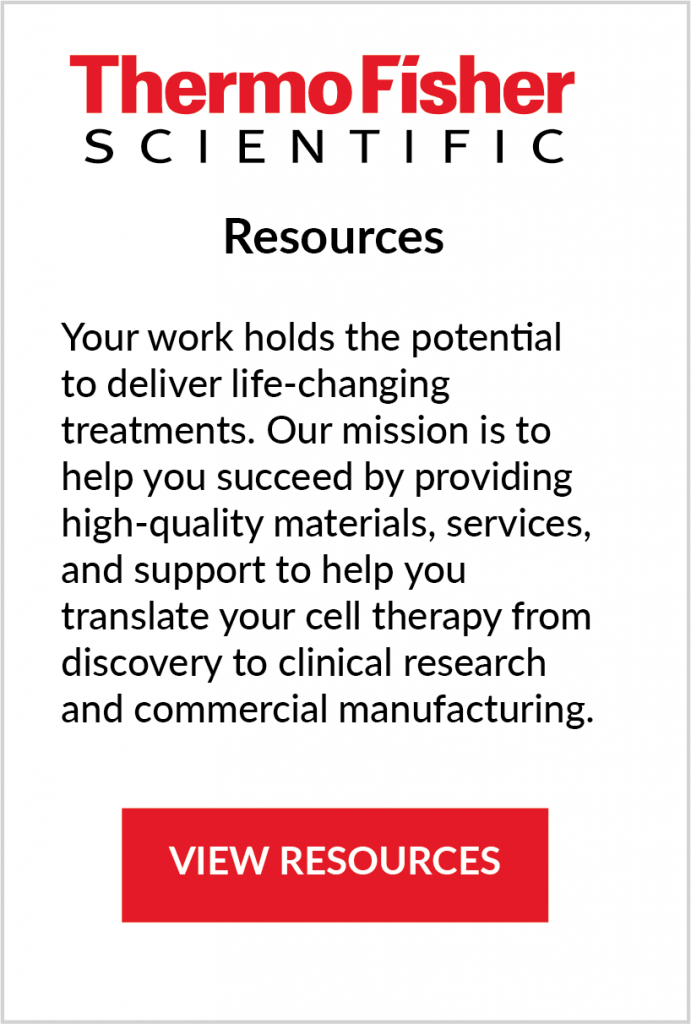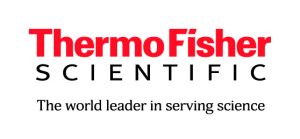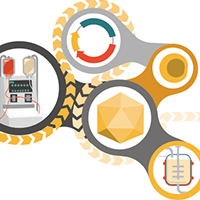Tackling the critical issues pertaining to raw & starting materials for cell & gene therapy manufacturing
Cell & Gene Therapy Insights 2019; 5(2), 259-263.
10.18609/cgti.2019.035
Q What are the chief headaches presented by raw and starting materials for cell and gene therapy as you currently see them?
TM: Being in the cell therapy industry, it truly is a unique space right now. It’s growing rapidly but it’s still on a steep learning path. As such, the challenges we are facing in relation to Raw and Starting Materials fall into several categories. The first one I’d like to bring up is that a lot of your raw materials are single source, from one supplier. So you have to really think about how you’re going to make sure that a problem in your supply chain doesn’t end up in resulting in you being unable to meet a patient’s needs.
Another specific concern we’ve run into, because we are using disposables, is plastics. The plastics creating particulate issues you have to deal with. Other challenges pertain to test kits and reagents – some of the kits are very challenging to use; and performing analytical tests on your reagents can be very complex and time consuming. Those are just some of the most common headaches.
RM: A lot of the issues that Tim mentioned, I have also seen. But I will say one of the raw materials-related headaches that is specific to the cell therapy industry is the actual raw material, the cells you’re going to make the product out of, particularly in an autologous scenario. Not only do we not have sufficient tools to characterise the initial cells in a time efficient way, we also don’t understand in the autologous setting what’s important to measure, and what’s going to have an effect on the end product.
IK: What comes into my head about this topic is that we need to remove animal-derived raw materials in these types of applications. I think I depressed my colleagues recently because I said we’ve already gone through this in the large-scale biologics where we thought we were safe, but we were not. Because we’re taking plant-derived raw materials that come from say farmland, and what’s there in the farmland is insects, and dogs running around, and maybe in some countries even human manure. It goes on and on.
Therefore, it doesn’t really matter whether it’s a meat hydrolycate or a soy product or cotton seed that may be used in the cell therapy process, it’s still a raw material, and it comes dirty with things that we don’t know.
RM: I’m concerned by the sort of things Ivar just mentioned and feel we need to spend more time characterising that and narrow down the window to understand what is important and what’s not.
I also think there’s a possibility that we could go down to a small molecule view whereby you have to know everything about everything, and I think our ability to understand that in these complex products just doesn’t exist.
My former colleagues at the FDA have heard me say this before, that it only makes sense to get all the animal products out, all the variability out, if you know that the very specific molecules, you’re adding in are sufficient for your cells to do what they’re supposed to do.
IK: Absolutely, and I think in the cell therapy space with regards to the raw materials, we have a higher level of risk because of what we don’t know. In large-scale biologics manufacturing we have an element of further processing beyond the bioreactor, so for instance if we are talking about infectious agent concerns, there are multiple steps of purification and filtering that remove or reduce those concerns. But cell therapy manufacturing is a very different situation. Taking cells out of a person, culturing them, growing them, manipulating them in some way with raw materials that have some unknown risk and putting it back into the patient – no further processing exists. So that’s what worries me at the moment – what we don’t know about raw material risks.
RM: One of the other headaches I’ve experienced is that pertaining to the term ‘GMP grade’. Which I still don’t know what that actually means! And having read a lot of inspection reports from facilities across the country, there are some that are doing processes I feel very comfortable with, others not so much but they might both ‘label’ themselves as GMP grade.
TM: That’s a good point. Sometimes the raw materials are raw materials that are only used at the R&D level and they aren’t considered GMP. But does that really mean they aren’t suitable in a clinical product?
I will say the regulatory agencies have been very open to discussions around that as long as you can do the appropriate testing of raw materials to ensure it’s meeting the quality that you need from that standpoint.
RM: The FDA has been very open to that because sometimes when you have sufficiently characterized a non ‘GMP grade’ material, it may be better than something that’s ‘GMP grade’. Knowing what your raw material is, to my mind is essential and I used to encourage using master files for raw materials, source materials, to the agency. Where that testing material, which may be commercial and therefore confidential, the agency could look at and give a reference to it, but the folks you were selling it to wouldn’t necessarily know that because that would be someone’s market edge, how they characterise that product.
IK: In my world, heading up Quality, you ask the simple question: can you accurately and completely reconstruct the construct and everything that went into that material? If I was a customer – and I was a customer once – I would demand that. I would need that. Full traceability and understanding for its intended use. And if its intended use is for cell therapy, we need to mitigate those risks we just talked about at the very beginning of this discussion, and the only way to do that is to know what we know and what we don’t know about those materials.
Q That leads us on nicely to how you can actually mitigate those risks? In terms of safety testing, which tests are essential an which are ‘nice to have’?
RM: My toxicology background is going to show here., but ‘nice to have’ is to ensure that the material does what you expect it to do. There are some of the raw materials that would otherwise be toxic, and I want to know they’ve been tested, and if there are trace materials in the raw materials that have some toxicity I want to know what the toxicity is for that element, at least the quantity, so I can impute toxicity. For cells as a raw material, donor eligibility criteria and infectious disease testing are an absolute must have.
TM: I think what Richard described is one of the most important things. We could go down some very generic things like “must have sterility testing because we’re putting this into a patient’s cells and need to maintain sterility throughout the process”. But one ‘raw material’ for which testing is critical is your viral vectors.
One of the things I’d like to see more of, is not actually the testing but the testing method of shifting from example S plus L minus testing which uses a cell culture, to more of QPCR type testing. And the reason for that is the speed at which you can get turnaround, because sometimes an example of just getting a result of some of this testing can take literally many months. That can really come back to one of your headaches, that could put you at risk if you can’t get the turnaround.
Clearly, we need to do certain tests, but it’s the test methods that need to evolve and I’d like to see us move more towards PCR testing. And we are moving that way, more and more, as you can show data, show equivalency, and you can drop the S plus L minus cell therapy approach to the test and get into PCR.
IK: As I used to say in my previous role at Genentech where I oversaw the adventitious agent management programme: Testing alone is not the answer.
If we think about testing as the answer alone, we’re in trouble. There has to be more information: What is this raw material? Where did it come from? What are our risks? That’s the very beginning of the whole process. We use testing to take a pretty good guess at what could be there in these raw materials, or the materials that are coming in. And in some ways, that’s the limitation of testing in general, for adventitious agent concerns. You’re looking for a needle in the haystack, but you don’t even know what the needle looks like.
Learning from large-scale fermentation, where we think we have a certain risk, but we don’t know what the risk is, we apply say HTST or the flash pasteurisation type of technologies to more broadly take care of those types of concerns. From the adventitious agent point of view, it has to be a holistic approach for any of these types of materials that we certainly use for manufacturing of biologicals or even the cell therapy.
Other testing, such as for toxins, certainly that would be based on a risk analysis of how you do your production. If you’re using stainless steel, the big behemoths out there, and you make the move to single-use technologies then you have to start looking at some other potential parameters, the leachables and extractables for example. But what I really want to go through is the type of analyses that are needed based on the cells’ intended use; whereby I know these cells are intended for this purpose i.e., expansion or further development of these human cells before they go back into a patient, and therefore I design tests that are based on that intended us from the bioreactor, to the raw materials and everything across the manufacturing path.
RM: That makes a lot of sense to me and I was hoping we would come to the intended use, because that is really important and it’s something to take into account in all situations.
If we look for example at CAR-T cell therapies, when they started to show clinical efficacy but resulted in cytokine release syndrome in patients, that’s not something we’d tolerate in a situation for benign disease; but in a disease where the outcome was dying, you have to figure out how to manage that risk. And a risk that I put in the same order as a risk of toxicity for our conventional chemotherapies and that thinking should go all the way back to raw materials.
IK: Commenting on Tim’s point regarding the speed of testing – of course we want speed. But the newer technologies are not based on looking for live entities, they’re based on looking for evidence of DNA of those adventitious agent concerns. So, I get it, we have to do this, but we may start finding things that have never been found before because we’re going from an assay that looks for evidence of live propagating types of organisms, and now we’re looking for DNA evidence, which is X times more powerful and sensitive. But that’s not evidence we actually have an adventitious agent that’s live there in that material. Because again where does that material come from? Farm, pieces of animal, there’s a lot of pieces and fragments of DNA there.
It’s true the nucleic acid-based technologies are taking off and they are useful for characterisation of cells of our manufacturing and master cell banks, those kinds of things, but it’s still a lot of interpretation that has to go into those. Because there’s algorithms that go into the fragments of DNA and a great deal of complexity there.
Q Could we could talk a little more about other types of testing that can have a negative impact in terms of the current timelines required? Where can you see newly approved accelerating testing methods coming onto the market and how much of an impact do you think they’ll have in reducing those timelines across your supply chain?
IK: If we go back to adventitious agent testing, there NAT assays, nucleic acid-based technologies. They certainly are extremely powerful, but we have to apply those with an understanding of the risk of the results.
Again, in the world of quality we always have to ask the question before we implement a new method: what is the risk of implementing the new method for this particular use? What can we anticipate finding and how do we explain that? Because in our regulated world we can’t just generate data and say after the fact, “we don’t know what that is”. We could put at risk an existing process in cell therapy, just like we can for biologics, if we don’t take this proactive approach and look and say with new technology is there something, we could find that we can’t explain? In other words, are we going to obtain data that doesn’t help us get to that point of saying there was something adventitious or not?
TM: Maybe going back to the first question of one of the headaches that has occurred out there, is reagents used in your test methods. We’ve seen that reagents, different lots, with variation, all of a sudden shift your assays. And if you have shift assays and you fall out of spec, you’re doing these long investigations, that’s an impact, and a real impact to the patient.
Understanding when you think you’ve done different lots and performed the validation and it looks like it’s stable, but then we’ve seen instability in some of the reagents for test methods. That’s an issue that can really slow down the turnaround time.
On the other side of the coin though, one thing I am excited about is sterility testing has sped up and has been very reliable. Previously there was a standard 14-day testing period for sterility; today in cell therapy BACT testing is down to 7 days, and there’s research going on right now that’s moving forward that in the next year or two could reduce that testing period down to just 24 hours for sterility. And when you think about the likelihood that this product is for a very sick patient, being able to turn around the product as quickly as possible can absolutely mean the different between life and death.
RM: I would agree with that. In fact, in the next few days there’s going to be a meeting in Maryland for the Standards Coordinating body talking about standards, and it was the need in the CAR-T space that drove that to the forefront. And now there’s a committee in ISOTC276 working on standard methods. The FDA changed the final sterility regulation for biologics in 2012, but because the agency guidance didn’t change for cell therapies, many people weren’t aware, and they were still using a 14 day growth boost test.
As Ivar mentioned, another test that it will sometimes take weeks or month is that pertaining to the leachables and extractables. Not only do they take a long time, but they cost a lot of money. You’re carrying out these tests on raw materials, on tubing kits and then if you change from one manufacturer to another, you have to perform these tests again. If you’re a small therapeutic spinout or academic lab, and you think you’re ready to go to an IND, but now you’re faced with a 6-month delay simply because you changed your tubing kit for example and have to perform new tests – that may just kill your entire project.
I think it would be good to have more rapid ancillary testing methods, but they need to happen in a more standardised way, so that small companies can more easily perform them in house. It’s easy to say I think you need to test your raw materials as they’re coming in house and make sure to verify that, you know their intellectual sweet spot is not in doing that. And having to create their own assays or validate their own assays is really not their cup of tea. So, implementation of accelerated testing can slow things down from an individual product development perspective.
TM: Whilst there’s no doubt we’re advancing in this space, one thing that I think is lagging behind is when you move to fully automate your processes, how do you embed in-process testing into that full automation, so you don’t have to be always taking samples? For example, one area that requires sampling is nuclear cell counting and viability – at the moment you pull samples during your process, which introduces risk of contamination. So, I think having in-line real time data will not only reduce risks during your manufacturing process but it also improves you data and understanding of what’s happening to your product as it’s manufactured. That can only help the industry advance in a more rapid way.
Q One of the headaches Tim that you touched upon at the beginning of the conversation was around single source suppliers. When in development, and how can you mitigate the risk presented by having individual or limited suppliers of your raw and ancillary materials?
TM: I think there’s multiple ways. You need to understand what your most critical raw materials are and then finding if you can dual suppliers of that material to reduce some of the risks of being reliant upon single source.
Obviously, understanding your inventory risk and carry a little bit of extra inventory so that should something go wrong you’ve got a bit of backup. Interestingly, I’ve seen with some suppliers on the inventory side, some companies don’t have data to support the expiry dates on their products. As such, we’ve had to perform some of our own stability analysis on raw materials because of the lack of data from suppliers when we’re in development stage.
IK: Undoubtedly risk mitigation has to be done very early in development of the process or the product. We have to get our development scientists to already have that intended use standpoint we talked about earlier, at the very forefront of their minds, and that includes “when I build this process, I want this to last and serve the patients”. It’s not a research project, it’s in fact being built to serve the patient. That’s number one.
When we talk about suppliers, I think there’s been a paradigm shift in this industry: we are not a supplier, we are a partner. That’s the differentiator. I truly feel that suppliers can no longer just be suppliers, because through these therapies we are closer to the patient than ever before.
Back in my Genentech days, we didn’t ask suppliers for some of the rigour and traceability for raw materials when we first started. But there’s been a huge evolution and with companies and the agency saying we need to think differently, suppliers have taken notice of that and recognise that if we’re going to be your partner we need to be ahead of the game with you and meet the expectations placed on you as a pharma company by the health authorities who are thinking this through as well. That’s an exciting evolution.
TM: I couldn’t agree more Ivar – it is about partnerships.
Q Single patient, single batch, time sensitive autologous cell therapy products obviously cannot benefit from the same economies of scale as allogeneic and off the shelf biotherapeutics. It would be great to look more at where can biopharma raw and starting material management principles and methods really can be employed to benefit this space?
TM: I think one of the things, and this is not just on the supplier but obviously the manufacturer, really has to look at our efficiency of operations with raw materials, and I’ll use one specific example here. We all know that we cannot truly benefit from economies of scale when it comes to the autologous setting – single patient single batch. But that being said, an example of where you can introduce efficiencies being what if you have a vial of one raw material that you’ve got to put into the bag, you only need a half a ml of that material, but that vial is 6 mls. Sometimes you take the one dose out that you put into your bag in your manufacturing and you’ve got to throw the rest of it away. So, you’ve just wasted material. And that’s not on the supplier, that’s on how do we become more efficient?
These are things we’re looking at. Because if you have a vial you can’t just sit there and keep poking in and out because you may raise the risk of contamination or something else. How can you find other ways? And sometimes that maybe you go back to the supplier and say hey, can you make a vial this size, not this size so it will be easier to use for example. And that’s where it comes back to being about a partnership – how can we work together to introduce more efficiency and reduce waste.
On the media side, how do you scale-out the use of these products? Where you’re making media individually for a particular patient, can you make a batch of media that’s ready to treat 50 patients? And how do you test that to make sure that the whole batch of media is suitable for use.
Those are just a couple of examples where we have to continuously improve upon to help streamline and introduce more efficiencies into cell and gene therapy manufacture.
IK: From a supplier perspective, it’s critical to ask: How do we ensure that supply, so whether it’s a single batch for one person or multiple batches so we can continually ensure that quality supply to patient? I think it’s critical to have that mind-set of saying that we play a big part in helping a therapeutics company guarantee they will be able to continually supply their patients.
RM: Earlier Ivar was talking about moving from stainless steel to single use and I think the knowledge that we derive from large biotherapeutics, can absolutely be translated to the autologous cell therapy products by narrowing it down. Even if it’s as simple as figuring out how to deal with a leachables and extractables question in a cost effective and efficient – that would have a huge impact.
Tim this is something you mentioned quite early on in the conversation about how your starting material variability can often be cited as a key cost and efficiency driver in this field. What do you think can be done to reduce this impact?
TM: As Richard mentioned earlier – the patient’s cells are really the biggest variability. This is something that as an industry we all need to continue to analyse and understand. We need to really understand those incoming cells, not only to better improve our manufacturing processes but also to inform the safety and efficacy of our clinical trials.
If we can really understand patient cells and the variation we see between patients, that will have a huge impact on how we treat people. There’s such variation depending on disease – if we are working with ALL, MCL, DLBCL – yes, we can see the differences in the patient’s cells. But even within the same disease there will be vast differences depending on the disease state of the patient, and further differences from patient to patient. And that to me is the number one thing we have to continue to work on in this industry to advance us.
Can you imagine if you really understand your patient’s cells, you could get to the point of being able to say “ok for this patient we have to adjust the media to support growth” Another patient “we need to adjust another part of the process”. That’s got to be the goal in this industry. Right now, the knowledge isn’t there but we will get to the point where we have more data to understand what changes in our processes can optimise the end product based on the variability of the incoming patient cells – that to me is a dream of the future.
IK: Tim is spot on in that. If we recognise there’s an inherent variability to some process step, then we look to minimise the impact of that – and that could involve working closely with your supply partners to understand where that variability might be introduces. Having that relationship and understanding your manufacturing processes of all those components that go in, will help you to reduce some of the variability you see.
RM: That is my dream of the future. And you have to understand, in order to do that, you’ve got to understand your ancillary materials, your raw materials, and what that variability means, in terms of processing whatever your final product is. Does your vector grow differently? Do you have a better transduction efficiency if you change this process? And then look at the cell, looking at the raw material, knowing not just differences on a pathological basis but then measuring characteristics of those incoming cells and knowing how they would be influenced by changes in your other materials that you add through the growth process. And being able to make control steps along the line, which goes back to your point about in line real time monitoring of what’s going on in your process.
We’re a few years from that, I think. But at least there are a few of us who have thought about it that way and I expect there are many more.
AFFILIATIONS
Richard McFarland
Chief Regulatory Officer, ARMI
Ivar Kljavin
Head of Quality, Bioproduction Division at Thermo Fisher Scientific
Timothy Moore
Executive Vice President, Technical Operations, Kite, a Gilead Company
This work is licensed under a Creative Commons Attribution- NonCommercial – NoDerivatives 4.0 International License.
Thermo Fisher Scientific is here to help you in any way we can. Please let us know if you would like a Cell and Gene Therapy Specialist to contact you regarding our GMP-grade media and re agents and/or QC/QA/lot-release assays for in-house testing.
agents and/or QC/QA/lot-release assays for in-house testing.




